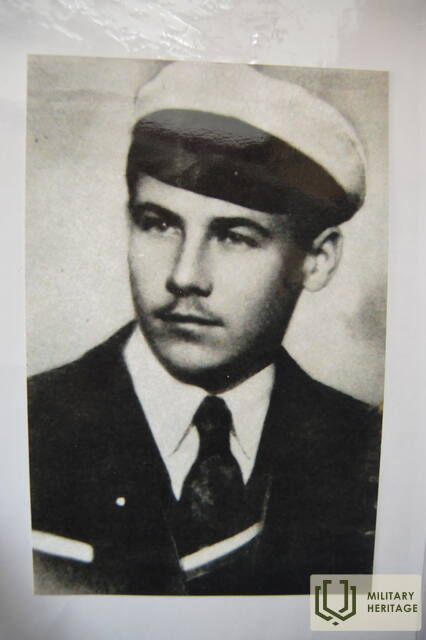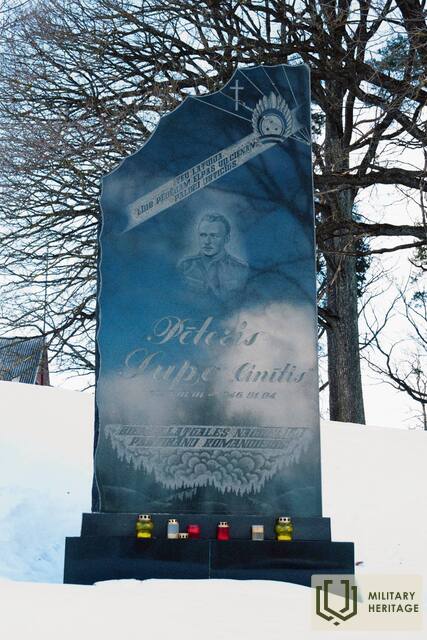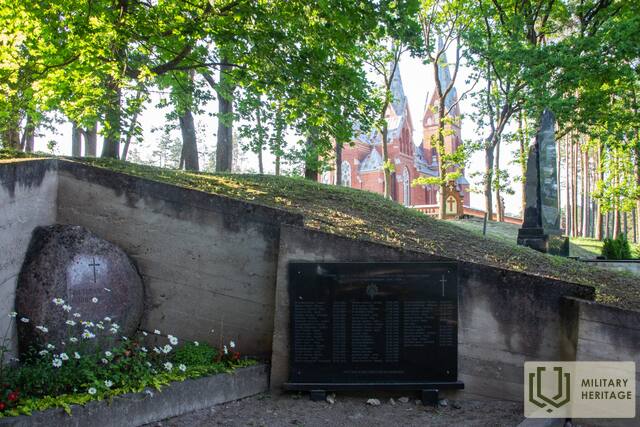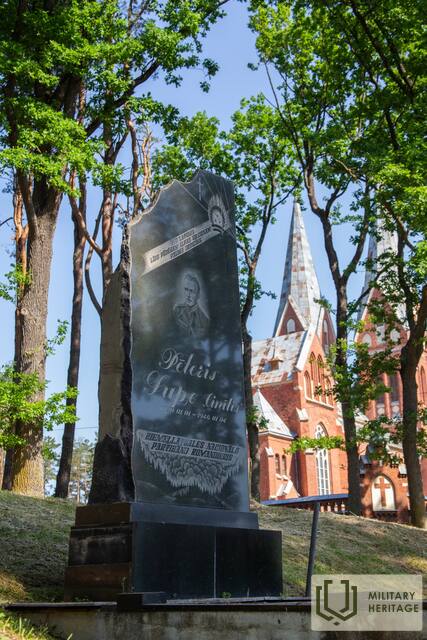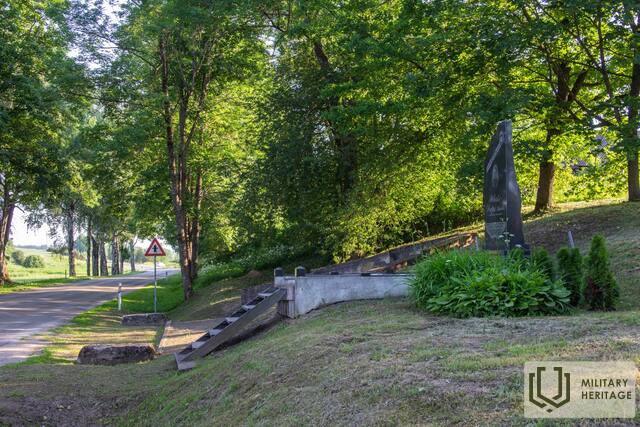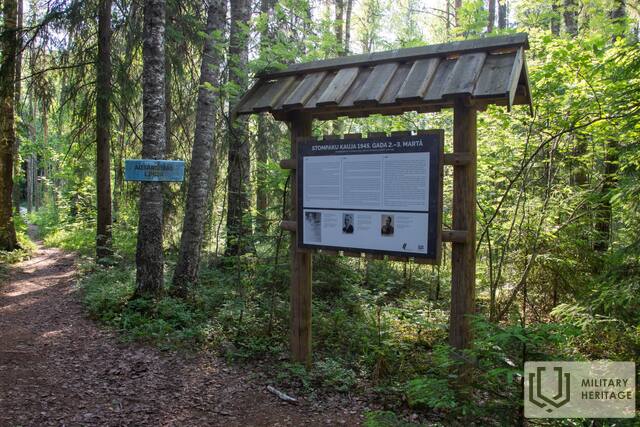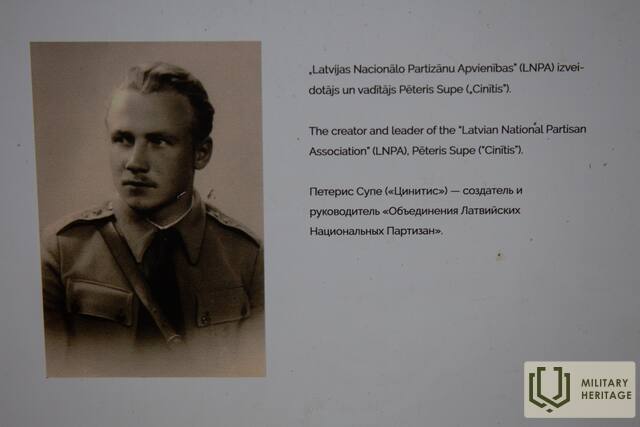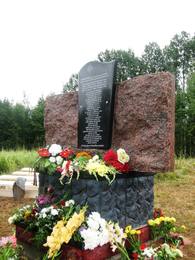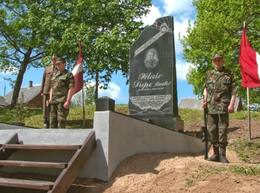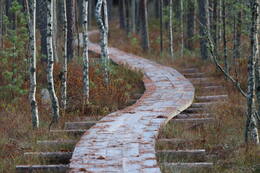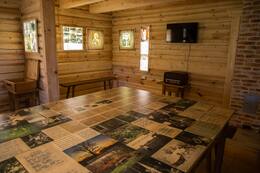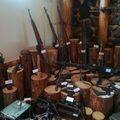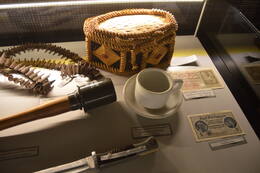Pēteris Supe – Latvijos nacionalinės partizanų asociacijos įkūrimo iniciatorius
Nuo 1944 iki 1946 metų Pēteriui Supei pavyko suvienyti miškuose išsibarsčiusius nacionalinių partizanų būrius į organizuotą judėjimą, kuris po Antrojo pasaulinio karo dar kelerius metus tęsė kovą prieš Latvijos okupaciją Abrenės apskrityje. Pēteris Supe, pravarde „Cinītis“, buvo vienas iškiliausių Šiaurės Latgalos nacionalinio partizanų judėjimo organizatorių ir vadovų.
Pēteris Supe gimė 1920 m. Abrenės rajone, Purvmalos parapijoje, jaunųjų Dārzų namuose. Vaikystėje jis aktyviai dalyvavo smulkiųjų judėjime ir vienintelis visame rajone gavo „Līdumnieka“ titulą. Būdamas 17 metų, jis baigė gimnaziją Viliake, vėliau studijavo Latvijos universiteto Žemės ūkio fakultete Jelgavoje ir 20 metų tapo diplomuotu agronomu.
Amžininkai jį apibūdino kaip labai iniciatyvų, gabų ir tautiškai mąstantį, netgi iki fanatizmo lygio, žmogų, turintį gerus oratoriaus ir psichologo įgūdžius. Vokiečių okupacijos metu jis buvo Abrenės apskrities vyriausiasis agronomas. Kai 1944 m. pabaigoje sovietų armija artėjo prie Latgalos ir Vidžemės, P. Supe išvyko į tremtį ir grįžo į gimtąsias vietas kaip vokiečių žvalgybos grupės vadas, tačiau reikia pabrėžti, kad būdamas tikru patriotu, jis nenorėjo tarnauti nei vokiečių, nei rusų sovietų pusėje. Vokiečiai buvusį agronomą ruošė mūšiams už priešo linijų vadinamųjų „miško kačių“ dalinių sudėtyje, tačiau P. Supe, tikėdamasis Vakarų pagalbos atkuriant Latvijos nepriklausomybę, pasirinko kitą kelią. Vienos pirmųjų žvalgybos misijų vokiečių vardu Abrenės pusėje metu, pastebėjęs didelį skaičių į Raudonąją armiją pašauktų, bet vėliau dezertyravusių latvių, jis radijo ryšiu paprašė vokiečių lėktuvais atsiųsti ginklų ginkluotoms grupuotėms formuoti, tačiau buvo atsisakyta. Karas dar nebuvo pasibaigęs, kai 1944 m. rudenį P. Supe nusprendė atsisakyti tarnystės vokiečiams ir pradėti organizuoti nacionalinį pasipriešinimo judėjimą.
Latvijos nacionalinės partizanų asociacijos (LNPA – galėjo veikti iki 1953 m.) įkūrimo iniciatorius buvo Peteris Supe, jo pavaduotojas buvo buvęs Latvijos universiteto Ekonomikos fakulteto studentas Stanislavas Ločmelis („Dūze“). Steigiamasis susirinkimas įvyko 1944 m. gruodžio 10 d. miške netoli Stompaki kaimo. Jie turėjo savo štabą, propagandos, ekonomikos ir kontržvalgybos skyrius, teismą ir net laikraštį. Įkūrimo metu joje buvo 123 vyrai, tačiau jau 1945 m., remiantis Viliakos rajono karinio komisariato duomenimis, joje buvo 1000 vyrų, ir netrukus organizacijai priklausė partizanų grupės Viliakos, Alūksnės, Valkos, Gulbenės, Cėsių ir iš dalies Maduonos rajonuose.
1945 m. sausio pradžioje LNPA partizanai, P. Supe įsakymu, pradėjo rinktis Stompaki pelkėse tarp Balvų ir Vilako, kur keliose pelkių salose įkūrė stovyklą, kurią be perdėjimo galima laikyti didžiausia partizanų stovykla visame Baltijos regione. Oficialus jos partizanų pavadinimas buvo „Saliņu mītnes“, tačiau populiariai ji buvo vadinama ir „Naujaja Berlyno“ pavadinimu.
P. Supės partizaninei veiklai buvo būdingas bekompromisis karas, kuriame su partizanais kovoję sovietų aktyvistai buvo žudomi be jokių dvejonių. P. Supės partizanai 1945 m. kovo pradžioje taip pat laimėjo garsųjį Stompakų mūšį, gindami savo gerai įrengtą bazę Stompakų pelkės salelėse. Tai tapo didžiausiu mūšiu per visą Latvijos nacionalinio partizaninio judėjimo istoriją, kuriame partizanų pusėje dalyvavo 300 kovotojų, o sovietų pusėje – daugiau nei 560. Būdamas talentingu vadu, jis turėjo visas galimybes palaipsniui paversti nacionalinį partizaninį karą Latvijoje iš atskirų dalinių kovos į visa apimantį, gerai vadovaujamą judėjimą, jei tik 1946 m. balandžio 1 d. Pēteris Supė nebūtų nušautas į partizanų gretas atsiųsto Čekos agento Jānio Klimkāno. P. Supė žuvo partizanų susirinkimo metu Jaungulbenės valsčiuje, kai išdavikas Jānis Klimkanas atidengė ugnį į P. Supę ir jo pavaduotoją Henriką Auseklį (Tāraudą).
Latvijos naujienos, 2005 m.
Sovietų okupacija Latvijoje, 1944 m. – šeštojo dešimtmečio pabaiga. Latvijos nacionalinės partizanų asociacijos susikūrimas ir veikla Stompako laikotarpiu
Susijusi laiko juosta
Susijusios temos
Susijusios vietos
Paminklas pasipriešinimo judėjimo dalyviams Stompakyje
Įsikūręs 15 km nuo Balvių, Viljakos kryptimi, dešinėje kelio pusėje.
Matomas atminimo ženklas.
2011 m. rugpjūčio 11 d., minint Latvijos laisvės kovotojų atminimo dieną, Balvu–Viliako plento pakraštyje priešais Stompakų pelkę buvo atidengtas pasipriešinimo judėjimo dalyvių memorialas, skirtas Pēterio Supės tautinių partizanų, žuvusių 1945 m. kovo 2 ir 3 d. mūšiuose, atminimui. Liepos pabaigoje į paminklo pamatus buvo įkasta kapsulė su žinia ateities kartoms. Kapsulėje įdėtas dokumentas su 28 tautinių partizanų, žuvusių 1945 m. kovo 2 ir 3 d. mūšiuose, vardais ir pavardėmis.
„1945 m. vasarį Stompakų pelkės salose, kurias žmonės pradėjo vadinti Stompakų pelkės salelėmis, 2 km nuo Balvų–Viliakos plento, buvo įkurta didžiausia Latvijoje nacionalinė partizanų stovykla, kurioje 22 apkasuose gyveno 360 žmonių. Tarp jų buvo ir legionierių, kurie, legiono divizijai atsitraukiant, su visais ginklais buvo pasilikę tėvo namuose. Siekdami sunaikinti partizanus, 1945 m. kovo 2 d. dviejų Čekos batalionų kareiviai kartu su naikintojais, kurių ginkluotėje taip pat buvo keturi minosvaidžiai, puolė apkasus. Kovos tęsėsi visą dieną, partizanai atkakliai priešinosi, o puolėjai patyrė didelių nuostolių, todėl negalėjo užimti stovyklos ir sunaikinti partizanų. Mūšyje žuvo arba nuo sunkių sužalojimų mirė ir 28 Stompakų pelkės gyventojai. Kitą naktį partizanai mūšiu „praėjo apgultis ir liko nenugalėtas“ prasiveržė pro stovyklas – taip rašė Zigfrīds.“ Apdovanojimų skyriaus Nacionalinio pasipriešinimo judėjimo dalyvių reikalų komisijos pirmininkas Berkis rašo apie Stompako mūšį.
Paminklas Šiaurės Rytų nacionalinių partizanų vadui Pēteriui Supei – „Cinītis“
Pagerbiant nacionalinių partizanų vado Pēterio Supės atminimą, 2005 m. gegužės 28 d. Viliake buvo atidengtas jam skirtas paminklas. Jis stovi netoli Viliakos katalikų bažnyčios, karo metu iškastų apkasų pakraštyje, kur čekistai laidojo sušaudytus nacionalinius partizanus. Po P. Supės paminklu įdėta kapsulė su 386 žuvusių nacionalinių partizanų vardais, mūšių aprašymais ir medžiaga apie partizanų vadą. Akmenyje iškalti žodžiai: „Tau, Latvija, likau ištikimas iki paskutinio atodūsio“.
Paminklą suprojektavo Pēteris Kravalis.
Netoliese yra memorialas Latvijos laisvės kovotojams, žuvusiems Stompaku miške ir kitose mūšių vietose bei nužudytiems čekistų 1944–1956 m.
2008 m. birželio 20 d. dešinėje sienoje buvo atidengta granito lenta su trimis stulpeliais išdėstytais 55 žuvusių partizanų vardais.
Paminklas pastatytas toje vietoje, kur komunistinė okupacinė valdžia kadaise eksponavo nužudytų partizanų palaikus, siekdama įbauginti likusius gyventojus.
Ant greta esančios lentelės išgraviruoti padėkos žodžiai Pēteriui Supei ir Bronislavos Martuževos eilėraštis:
"Kelkis, Piteri Supe,
Siela, kovok kare!
Šiandien tavo kraujo auka,
Iškilo tarp žmonių.
Išeik ir gyvenk amžinai
Jaunystės stiprybėje ir energingoje
Jis plasnoja, plasnoja, plasnoja
"Kylančioje vėliavoje!"
Nacionalinių partizanų būstinė gamtos draustinyje „Stompakų pelkės“ (Stompaku purvi)
Antrojo pasaulinio karo metais Stompakų pelkėje buvo viena didžiausių nacionalinių partizanų būstinių Baltijos šalyse. Šiandien ši teritorija priklauso Stompakų gamtos draustiniui. Pelkių salose esančią gyvenvietę galima pasiekti pažymėtu pėsčiųjų taku.
1945 m. pradžioje Stompakų pelkėje buvusioje nacionalinių partizanų būstinėje gyveno 350–360 žmonių, iš jų – 40 50 moterų. Joje buvo 24 gyvenamieji bunkeriai – pusiau į žemę įkasti statiniai, kuriuose galėjo gyventi 3–8 žmonės. Būstinėje taip pat veikė kepykla, požeminė bažnyčia ir trys antžeminės pašiūrės arkliams. Partizanai rengė išpuolius prieš okupacinio režimo pareigūnus.
1945 m. kovo 2–3 d. čia vyko Stompakų mūšis – didžiausias nacionalinių partizanų susirėmimas Latvijoje. Būstinėje buvusius 350–360 partizanų puolė NKVD 143-asis šaulių pulkas ir vietinio stribų (rus. „isterbiteli“) bataliono kovotojai – iš viso 483 vyrai. Mūšis truko visą kovo 2 dieną. Kovo 3-iosios naktį partizanams pavyko ištrūkti iš būstinės ir pasitraukti į ankstesnės bazės vietą. Mūšyje žuvo 28 partizanai, o NKVD neteko 32 karių.
Šiuo metu Stompakų būstinės vietoje yra atkurti trys bunkeriai – bažnyčia, štabas ir gyvenamasis bunkeris, taip pat 21 bunkerio vieta. Įrengti informaciniai stendai apie būstinę ir mūšį. Galima užsisakyti ekskursijas su gidu.
Bronislavos Martuževos poezijos klėtelė
Bronislavos Martuževos muziejus įsikūręs poetės vaikystės namų vietoje Indranų valsčiuje, Maduonos savivaldybėje. Muziejaus ekspozicija įrengta renovuotame tvarte, kuriame eksponuojami balso ir vaizdo įrašai iš Nacionalinio pasipriešinimo judėjimo, poetės darbo leidžiant pogrindinį žurnalą, taip pat kuriant eilėraščius ir dainas nacionaliniams partizanams. Bronislava Martuževa dalyvavo pasipriešinimo judėjime nuo pat jo įkūrimo. Lazdinės, Martuževos namai, kurie neišliko, taip pat buvo prieglobstis Latvijos nacionalinių partizanų asociacijos vadovui Pēteriui Supei ir jo bendražygiams. Poetė penkerius metus slapstėsi savo namų rūsyje, susitikinėjo su partizanais, rašė eilėraščius (įskaitant kūrinius, skirtus partizanams Pēteriui Supei, Viliui Tomui, Smilgos grupei, Laiveniekui, Salnui, Celmiņui, Bruno Dundurui ir kitiems), taip pat rašė dainas ir mokė jų partizanus. Dabar jos dainas dainuoja grupė „Baltie lāči“ (pažodžiui: „Baltieji lokiai“). 1950 m. kartu su Viliu Tomu pogrindyje buvo leidžiamas žurnalas „Dzimtene“ (pažodžiui: „Tėvynė“). Poetas ranka perrašė 11 žurnalo numerių, po 10 egzempliorių. Poetė, jos brolis, sesuo, motina ir Vilis Tomas buvo suimti 1951 m. Bronislava Martuževa iš Sibiro grįžo 1956 m. Pripažintas vietos ir šalies mastu, poezijos tvartą lanko tiek vietos gyventojai, tiek savivaldybės svečiai. Susipažinimas su poetės gyvenimu suteikia galimybę atrasti Latvijos likimą.
Privati ekspozicija „Abrenės kambariai“ (Abrenes istabas)
Privati ekspozicija „Abrenės kambariai“ įsikūrusi Viliakos mieste, istoriniame pastate. Iš pradžių šis pastatas stovėjo senosios Marienhauzeno turgaus aikštėje. Vėliau čia veikė butai, biurai, įvairios parduotuvės, o Antrojo pasaulinio karo metais – latvių savigynos štabas, gestapas ir čekistų būstinė. Ekspozicijose pristatomi įvairūs Viliakos ir jos apylinkių istorijos laikotarpiai bei įvykiai nuo 1920 iki 1960 metų – kai miestelis priklausė Jaunlatgalės, vėliau Abrenės apskričiai. Tarp eksponatų – Stompakų pelkės partizanų štabo daiktai, pasakojantys apie nacionalinį pasipriešinimą Latgaloje, taip pat dokumentai ir fotografijos iš Nepriklausomybės kovų laikotarpio. Naujausioje ekspozicijoje lankytojai gali susipažinti su kadaise garsia motokroso trasa „Baltasis briedis“
Rendos nacionalinio pasipriešinimo judėjimo muziejus
Muziejus yra įsikūręs už kelių kilometrų nuo Rendos parapijos centro. Parodoje pasakojama apie 50 metų trukusį pasipriešinimo judėjimą Latvijoje: pasipriešinimą pirmajai sovietų okupacijai, pasipriešinimą nacistinės Vokietijos okupacijai ir ginkluotą bei nesmurtinį pasipriešinimą sovietų okupacijai. Paroda įsikūrusi dviejuose pastatuose. Pirmajame pastate saugomi pirmosios sovietų ir vokiečių okupacijos įrodymai. Parodoje eksponuojamas restauruotas tvarto pastatas, kuriame dėmesys sutelktas į Nacionalinį partizaninį karą. Tarp dviejų pastatų yra autentiško išplanavimo bunkeris ir kareivių naudoti apkasai. Netoli muziejaus Rendoje esantys kasinėjimai, blindažo aikštelė ir kliūčių ruožas tarnauja kaip jaunimo sargybinių ir visų susidomėjusiųjų treniruočių aikštelė. Apsilankymus būtina užsisakyti iš anksto.
Vienas didžiausių nacionalinių partizanų mūšių, vadinamas Āpūzniekų mūšiu, įvyko 1946 m. sausį netoli čia. Mūšyje Kabilės nacionalinis partizanų būrys nugalėjo daug didesnes okupacinės valdžios pajėgas. Mūšio vietoje, kurioje yra informaciniai stendai, dabar įrengta poilsio aikštelė.
Viliakos muziejus
Viliakos muziejus įsikūręs dviejuose pastatuose – 1913 m. statytuose miestelio kultūros istorijai svarbiuose katalikų parapijos namuose ir buvusiame kapucinų vienuolyne, kurio rūsiai glaudžiai susiję su nacionalinių partizanų judėjimu Stompakuose ir sovietų čekistų veikla. Žmonės prisimena, kad šiuose rūsiuose buvo laikomi ir kankinami žmonės. Senajame muziejaus pastate įrengtos kelios ekspozicijos. Viena jų pristato 1920 m. laisvės kovas Šiaurės Latgaloje, Antrojo pasaulinio karo įvykius – žydų holokaustą Viliakoje ir informaciją apie sušaudytas šeimas. Daugiau apie kiekvieną šeimą galima sužinoti pagal gyvenamosios vietos adresą.
Ekspoziciją papildo informacija apie nacionalinių partizanų judėjimą Stompakuose – įvairūs eksponatai: nuotraukos, daiktai. Muziejaus lankytojai gali susipažinti su karinio paveldo vietomis Viliakoje ir jos aplinkinėse vietovėse, pavyzdžiui, kovotojų už Laisvę paminklu Jaškove, kuris sovietmečiu buvo nugriautas ir atstatytas 1990 m., stela, skirta Lačplėsio karo ordinu apdovanotiesiems. Muziejaus ekspozicijoje girdisi Antrojo pasaulinio karo lėktuvo garsas, kaip priminimas apie netoli Viliakos buvo vokiečių aerodromas „Luftwaffe“. Muziejuje galima susipažinti su prisiminimais apie Antrojo pasaulinio karo įvykius Viliakoje ir gauti informacijos apie vokiečių karo belaisvių stovyklą Račuose.




